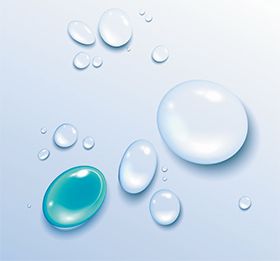Advanced Fibers

Fibers represent a remarkably old and abundant material form. In fact, fibers are important in our individual life, starting from the first day, and, they have profoundly influenced the development of humanity for many thousands of years. Today, the development of fibers with special properties represents a driver of industrial innovation, particularly in high-spec applications. It is our goal to contribute to the research for safer and more sustainable fiber in our living environment.
Advanced fibers wanted
We appreciate the many requests from industry regarding fibers with new properties, particularly in the area of sustainability. The fundamentally driven development of advanced fibers like the continuous fluid-core fiber can find many innovative applications and stimulate the added value chain. The close collaboration with scientific peers in different fields allows us to address complex problems that comprise different aspects of materials, society, environment or medicine . This unique combination can generate significant added value for our research partners and open access to otherwise inaccessible markets [movie: Rheocore Fiber and fiber spinning].
Understanding synthetic fibers inside-out

Due to their importance, we focus mainly on the development of novel synthetic fibers. This focus is economically relevant since two thirds of world-wide produced fibers are synthetic. A synthetic fiber is much more than a simple polymer thread; the performance determining factor of a fiber lies within its molecular structure. Inside there are small crystals, which tie together the polymer molecules; and there are more amorphous regions in a fiber; the interplay between these domains directly determines the fiber flexibility and tensile strength. Along these lines, we analyze and modify the fiber structure on nanometer to micrometer scales using cutting edge analytical tools, and, by controlling the melt-spinning process in new ways. Mastering the interplay of materials science and processing is key.
Interacting with the surface

About bond making and bond breaking

Profound understanding of chemical bond making and bond breaking is required to synthesize new functional molecules. We focus on “green” and economical synthesis routes as well as the understanding of how molecules disintegrate at the end of the material lifetime. The latter aspect includes ageing or physical disintegration by heat or radiation. In this area we make use of highly modern analytics tools including synchrotron radiation at the VUV beamline of the Paul Scherrer Instittute (PSI). Having this know-how at hand, we are able to tailor interesting properties like corrosion resistance, chemical stability, flame retardency or biological functionality.
The possibility to synthesize customized molecules allows us to finally provide industry partners with exclusivities based on strong substance patents for commercial exploitation. This is an invaluable asset that helps carry new substances through legal admission procedures like the REACH registration—thus making them available to a range of application areas.
Together with industry

We have experience running collaborative projects with industry, where we can adopt different models for collaboration, ranging from bilateral to national to international schemes. The typical goal of such collaboration is to generate innovation in the form of intellectual property in the business area of the industry partner, which adds to global competitiveness or allows market expansion. Often industry partners obtain exclusivities for their business area of the project partner. If a development or part of it becomes useful in another field of application, this can synergistically help market introduction, e.g. cost splitting for REACH registration.
Pre-competitive research
Prof. Dr Manfred Heuberger
Head of Advanced Fibers
manfred.heuberger(at)empa.ch
Phone +41 58 765 78 78
Movie of our lab Advanced Fibers
"Spirituality is a source of inspiration for me in personal and professional life"
-
Clean at Last – Sustainable hydrophobic coating of textiles
Eco-friendly siloxane-based plasma coating enables hydrophobic properties of textiles that outperform common fluorocarbon finishings regarding capillary depression, fast drying and durability while being sustainable. Most of all, the hydrophobization includes the treatment of elastic fibers that has been a weak point so far. The partners beag, Lothos and Empa present their Innosuisse-funded joint development at Techtextil 2024.
RTS Tagesschau broadcast
The latest Empa Quarterly gives more information:
-
Drug delivery with melt-spun liquid-core fibers
Conventional local drug delivery systems often encounter issues such as burst-release, limited drug reservoirs, rigidity, and low mechanical performance. We present an innovative approach to local drug delivery utilizing melt-spun drug-loaded liquid-core filaments (LiCoFs)...more -
Thermoset materials with inherent multifunctionality such as flame retardancy and recyclability will gain broader application possibilities and longer material lifespan to meet safe sustainable future. Our review published in Composites Part B, on "Recyclable inherently flame-retardant thermosets: chemistry, properties and applications" provides useful insights; https://doi.org/10.1016/j.compositesb.2023.110667
-
The European Meeting of Fire Retardant Polymeric Materials (FRPM) is a conference which is held every other year in Europe.
Experts from all over the world are meeting to discuss and present the newest research results in the field of fire retardant polymeric materials.
This year the conference is held from 26 – 29 June at the Empa in Dübendorf.
More information you can find here.
